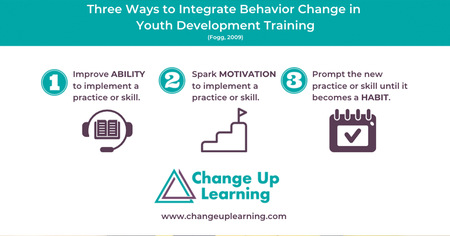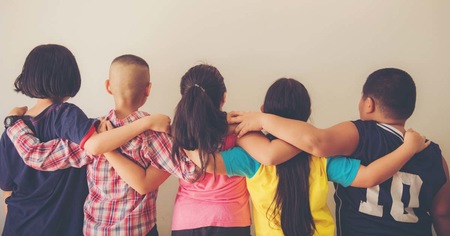Curry noted that, much like New York City schools' eight-point fall framework, other schools may see guidance based on square footage, and A/B—or even A/B/C—alternating schedule, blended learning, phased starts, and more.
"It gave a nod to trauma-informed practice and to really pay attention to the emotional needs of young people," said Curry of New York City Fall Framework, released by New York City Schools Chancellor Richard A. Carranza.
Overseth notes partnerships with schools are going to be more important than ever and that the traditional thought of afterschool may not actually occur after school.
"What we provide and how we provide it really needs to be just thought of in different sorts of ways," said Overseth, adding that assessing your mission as an organization is vital. "My guess is that we'll be asked as a field to provide things in a very different way and to meet some needs that had not previously been needs, including things like a larger amount of time per day for childcare and what that looks like for working parents."
Gina Warner, President and CEO, NAA, noted every idea is on the table at this point and asked Overseth what resources exist for people wanting to go to their school partners to help in the fall.
Overseth suggests doing a financial analysis of the cost of programs by utilizing FMA, exploring See Change Institute for more resources, and connecting with fellow professionals in the field.
"I also think that there's going to be quite a bit of one time investments or sort of immediate investments that folks are going to need," said Curry. "Kids are going to be at every different learning level you could possibly imagine. I almost feel like we should do away with grades because what does it mean to be in the fourth grade at this point? Everybody has learned a different amount of information over the last three or four months. So for us on the youth development side like, can we get a handle on something like differentiation, so that we can really provide academic enrichment that meets kids where they are? That requires a lot of investment in knowledge that I don't think we've really had to have before."
Warner asks about some advice and resource for people putting together intensive staff preparation for the fall.
"I hope that where you are, you have the equivalent of Partnership for Afterschool Education or Community Resource Exchange or Youth Development Institute or all of these other wonderful intermediaries that can help provide professional development," said Overseth, adding that performing an assessment of staff capacity is also helpful. "I think we need to be sharing more than we ever have in the past."
Curry agreed, noting intentionality is key.
"It's not just that we need 10 group leaders, but I need one person who's really good at building relationships online, who can support everybody else with that I need; one person who is a STEM expert who can translate that and do experiments with kids so it's like very specific hiring and competency assessment," said Curry. "Everybody just needs again to be upskilled on how to do this whole thing remotely. It's different! It's not just taking your in-person stuff and doing it online."
There's incredible uncertainty, Overseth says, with the talent in the afterschool field.
"I cringe to think of the potential loss of just an extraordinary capacity that's become so beautifully professionalized over the past decade or two," said Overseth of programs needing to let staff go, while offering encouraging words for those who may be hiring soon. "I think we'll have some very talented people who may have a few hours here and there to help and it would really help them stay in the field, once things come back to whatever normal is going to be."
Warner agrees, noting the breadth of opportunity before us as we move forward. Relationship building, as always, is vital.
"Our field does things very well organically," said Curry, noting we're all learning in real-time. "We've always gravitated toward relationship building and social-emotional learning as things that are important and I expect that we will shift that and recognize the need to do that in the online space."
Overseth says finding how we can share resources with each other is vastly important.
"I think seeing our responsibility beyond just our own goals, and how we support a community is to get that information out," said Overseth, referencing the emails she received when the Paycheck Protection Program, aka PPP, was introduced. "What we can do to be helpful is to find the expertise of people who do this well. If someone this summer has done an in-person program and had to deal with social distancing with little kids—which is just so hard—let's learn from each other on this because we're going to be our best set of resources. Tell me what to do that can make a difference."
Our biggest job right now, Curry says, is to not lose sight of quality and equity and how they translate from in-person to virtual.
"What I think we need to do is look at our quality tools and figure out what works for the online space—what do we need to keep, what do we need to tweak to maintain that standard, even if it looks a little bit different," said Curry. "Do you have a policy on what should be in the background behind a young person who's participating in an online activity? For some young people, it could be very stigmatizing to know that their peers are going to see into their home."
Curry encourages people to consider making Universal Design for Learning (UDL) part of their program.
"It's really a model that ensures that everything that you're doing is accessible to the most number of young people," said Curry. "I think if we're not doing that, we're going to miss a lot of kids. It doesn't matter how great of an at-home fitness or STEM activity we're offering—we really need to make sure that those design basics are there to ensure its equitable and inclusive."
Curry notes more resources on equity, implicit bias, privilege, identity and intersectionality are becoming more available.
"I wish I had 'equity in a box' for all the programs out there, but I really think that it starts with us as individuals," said Curry.
"If we can be better and more inclusive and more mindful as people, we create more inclusive mindful programs."
Access the entire conversation here.
Courtesy of NAA.




